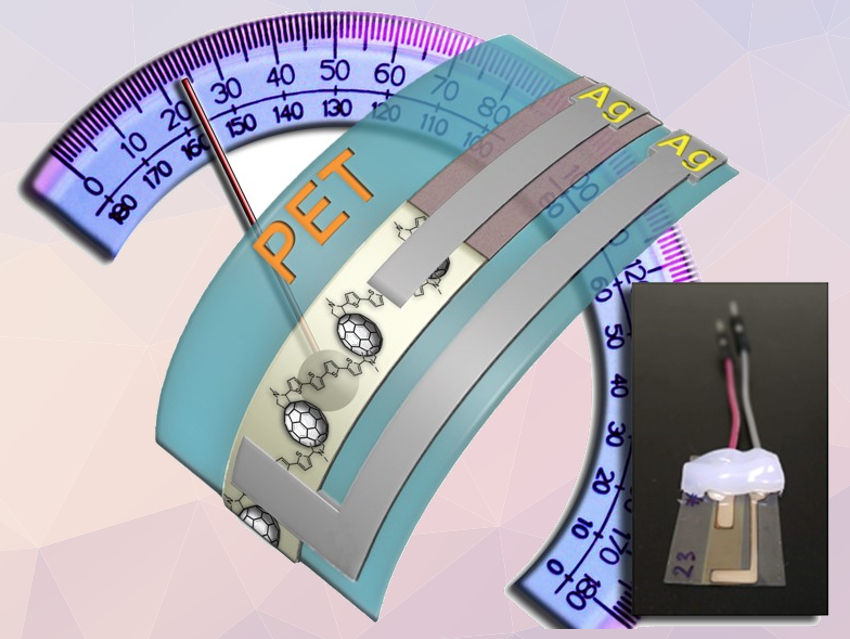Conjugated polymers can have useful optical and electronic properties for applications, e.g., in solar cells, transistors, and sensors. Fullerene-containing polymers, for example, have been widely used as materials in organic photovoltaics because of their high electron mobility.
With fullerene‐based materials, it is possible to modulate their structure by adding side chains to the fullerene units. This hinders the tight packing of fullerene cages and leads to intrinsic disorder, which could be useful for designing new materials that respond to mechanical strain. Mechanical deformation can induce a rearrangement of the molecular packing, and thus, of the conductive network, causing detectable changes in conduction properties.
Strain-sensitive materials can be used, e.g., in bend sensors. Such sensors require high sensitivity at low bending angles for some applications in wearable electronics. A simple fabrication approach, flexibility, and optical transparency are other useful properties. However, combining these attributes in a single material is challenging.
Francesco Giacalone, Bruno Pignataro, University of Palermo, Italy, and colleagues have designed a new class of semitransparent bend sensors. The sensors are based on a bithiophene-fulleropyrrolidine bisadduct (pictured below), which was prepared from C60, N-methylglycine, and 2,2’‐bithiophene‐5‐carboxaldehyde in o‐dichlorobenzene (ODCB). The monomers were electropolymerized onto flexible indium tin oxide(ITO)/polyethylene terephthalate (PET) electrodes to create thin-film bend sensors.

The resulting sensors show a high response to deformations at low bending angles (10°–30°). The devices could be a step towards the development of fullerene-based thin-film bend sensors for transparent wearable devices, health monitoring, and soft robotics.
- Bending Sensors Based on Thin Films of Semitransparent Bithiophene‐Fulleropyrrolidine Bisadducts,
Clara Chiappara, Vincenzo Campisciano, Giuseppe Arrabito, Vito Errico, Giovanni Saggio, Gianpiero Buscarino, Michelangelo Scopelliti, Michelangelo Gruttadauria, Francesco Giacalone, Bruno Pignataro,
ChemPlusChem 2020.
https://doi.org/10.1002/cplu.202000526


![Synthesis of [c2]Daisy Chains via Mechanochemistry](https://www.chemistryviews.org/wp-content/uploads/2025/04/202504_RotaxanesWithSolidStateMechanochemistry-125x94.png)

